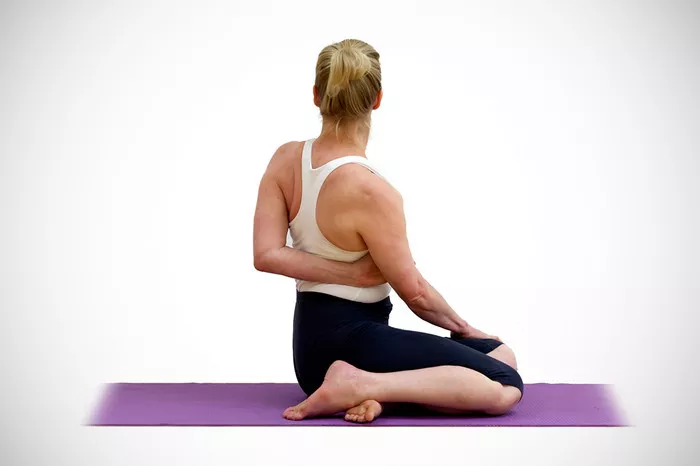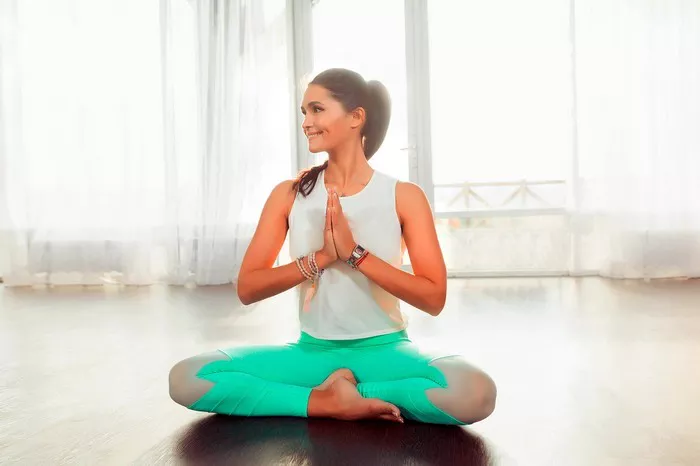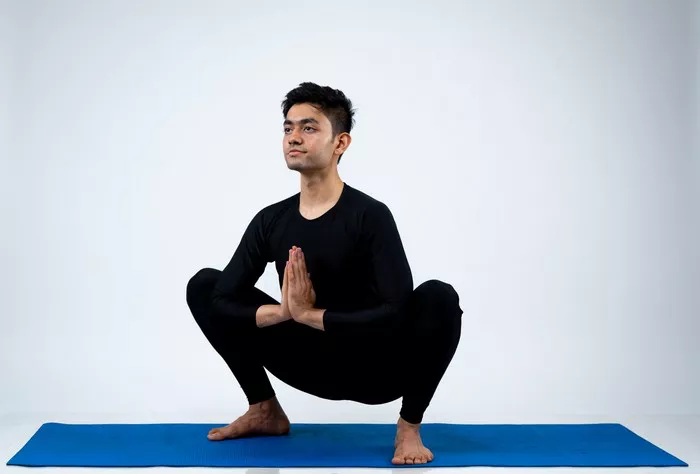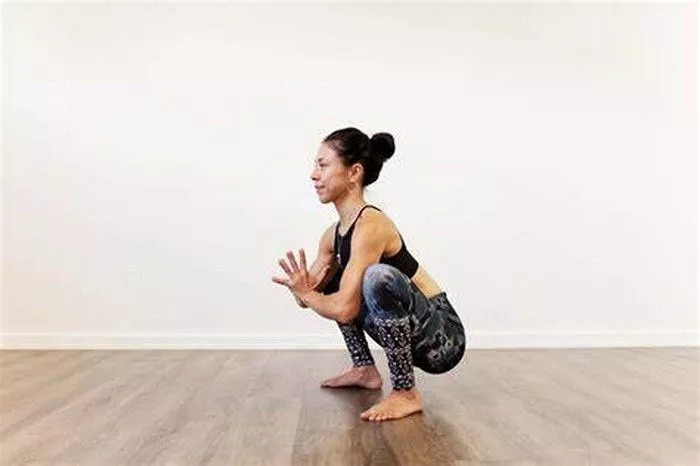Frog Pose, also known as Bhekasana in Sanskrit, is a yoga posture that can be incredibly challenging for practitioners at all levels. While it may look simple at first glance, the pose demands a unique combination of strength, flexibility, and mental focus, making it difficult for many people to master. Whether you’re a seasoned yogi or a beginner, this pose can present significant hurdles. Understanding why Frog Pose is so challenging involves looking at its anatomical demands, its psychological impact, and how it differs from other yoga poses. In this article, we will explore these factors in-depth, helping you gain a better understanding of why Frog Pose is so difficult and how you can work towards mastering it.
1. Understanding the Frog Pose (Bhekasana)
Frog Pose is typically performed in a seated or lying down position, where the practitioner begins by bringing their feet together, pressing the soles into each other, and bending the knees outward. The goal is to gently open the hips and stretch the inner thighs, groin, and lower back. The variation of the pose that is most commonly discussed in the yoga world is the supine variation (lying on the back). In this version, the legs are bent at a 90-degree angle, with the soles of the feet together and the knees splayed wide apart.
However, variations of Frog Pose also include seated or standing poses, which require different levels of flexibility, strength, and balance. Regardless of the variation, the challenges remain quite similar.
The anatomical focus of Frog Pose:
Hips: Frog Pose deeply stretches the hip flexors and the muscles of the inner thigh. The outer hip rotators are also engaged to help stabilize the body during the pose.
Groin and Inner Thighs: The most pronounced stretch is felt in the groin and inner thighs, areas that can be particularly tight for many people.
Lower Back and Spine: The posture involves a significant degree of hip flexion, which can create discomfort in the lower back if not properly executed.
Knees and Ankles: The positioning of the legs in Frog Pose puts stress on the knee joints and may be uncomfortable for those with knee issues or limited ankle flexibility.
2. The Challenges of Flexibility
One of the primary reasons Frog Pose is difficult is due to the flexibility demands it places on the hips, inner thighs, and groin. For those with tightness in these areas, the pose may feel extremely challenging or even impossible to perform correctly.
Hip Flexibility
The hip joint is one of the most mobile joints in the body, but it can also be a source of tension and discomfort if it’s not properly stretched. Many people have tight hip flexors due to prolonged sitting, poor posture, or lack of flexibility training. In Frog Pose, the hips must be able to open wide in a way that feels unnatural or difficult for many. When the hips cannot fully open, it limits the effectiveness of the stretch and causes strain on other areas of the body, such as the lower back.
For individuals with tight hip flexors, the body may also resist deep hip flexion, which is a critical aspect of the Frog Pose. This resistance can cause discomfort or even injury if the practitioner tries to force their body into the position without proper preparation.
Inner Thigh and Groin Flexibility
The inner thigh muscles (adductors) and the groin area are another primary focus of Frog Pose. These muscles tend to be tight for many people due to a lack of stretching or the way we move throughout our daily lives. Sitting for long periods, walking, or even running can contribute to this tightness.
In Frog Pose, the inner thighs are asked to stretch deeply as the knees splay outward, and the soles of the feet press together. The groin, too, is stretched as the legs open outward in a frog-like stance. For those with tight inner thighs, this can feel very intense and challenging.
It’s important to remember that this stretch should never be forced. Forcing the legs too far apart can lead to injuries in the groin and hip area, which may worsen flexibility in the long run. The key to making progress in Frog Pose is patience and consistent practice.
3. The Importance of Strength
While Frog Pose is often thought of as a stretch, it also requires significant strength to maintain the posture. Many yoga poses involve a balance between strength and flexibility, and Frog Pose is no exception.
Hip and Core Strength
Frog Pose requires hip stabilizing strength, particularly in the outer hips and gluteal muscles, to keep the pelvis in the correct alignment. Without the proper strength, the pelvis may tip forward, causing strain in the lower back.
Additionally, a strong core is essential for holding the pose without collapsing into the lower back or engaging the hips in a misaligned position. The core helps to stabilize the pelvis, which enables a deeper and more controlled stretch.
Arm and Shoulder Strength
Although the focus of Frog Pose is on the lower body, the arms and shoulders play a supporting role. In the variation where the body is lying on the floor, the arms may be used to press into the ground for support. Without sufficient arm and shoulder strength, it can be difficult to balance and maintain the position.
4. Knee and Ankle Discomfort
For some practitioners, knee and ankle discomfort is a major obstacle in Frog Pose. This discomfort often arises due to the position of the legs and the intense stretch placed on the knees. Those with knee problems or less flexible ankles may find it difficult to sit in the pose with the knees fully spread apart and the feet pressed together.
Knee Concerns
In Frog Pose, the knees are forced to bend deeply outward, which can create tension in the joint if it is not sufficiently flexible. Some individuals may also have underlying issues such as patellofemoral pain syndrome or meniscus injuries that exacerbate discomfort during the pose. Additionally, practitioners who are not able to maintain proper alignment of the knees may experience strain or discomfort, especially in the ligaments around the knee.
For individuals with knee sensitivity, modifying the pose (for instance, by using props like blankets or cushions) or avoiding deep stretches altogether can be helpful. It’s essential to listen to your body and avoid pushing past a point of discomfort.
Ankle Issues
The position of the feet in Frog Pose, with the soles pressing together, can cause discomfort for those with tight ankles. This can limit the depth of the pose and result in strain in the foot and ankle joint. Ankles that lack flexibility can make it difficult to maintain a stable position and may even cause the feet to slide out of alignment.
5. Psychological Factors: Patience and Mental Focus
Beyond the physical challenges, Frog Pose also has a mental component that contributes to its difficulty. Yoga practice is often as much about the mind as it is about the body, and Frog Pose is no exception.
Mental Resistance
Many people experience a feeling of mental resistance when attempting challenging poses like Frog Pose. The intensity of the stretch, combined with the deep sensation of opening the hips and groin, can trigger discomfort and frustration. For some, this mental resistance may make it even more difficult to hold the pose or relax into it.
In yoga, this type of mental resistance is referred to as dissonance, and it is an important aspect of personal growth. Pushing through discomfort with patience and mental focus allows practitioners to overcome mental barriers and deepen their practice. This is often easier said than done, especially when the body’s flexibility is limited, or the stretch feels too intense.
Overcoming Fear
Another psychological hurdle in Frog Pose is fear. The deep stretch in the hips and groin area may feel intimidating or even painful for some, especially for those who are not accustomed to such intense flexibility work. Fear of injury or fear of being unable to perform the pose correctly can make it difficult to fully relax into the position.
Overcoming this fear requires time and practice. Approaching the pose with a sense of curiosity, rather than fear, can help practitioners make progress in their flexibility journey.
6. Tips for Practicing Frog Pose
While Frog Pose may seem difficult, there are ways to gradually increase your flexibility, strength, and comfort level in the pose. Here are some tips for working toward a deeper and more comfortable Frog Pose:
1. Warm Up Properly
Before attempting Frog Pose, it’s important to warm up the body. Focus on gentle stretches for the hips, groin, and thighs. Poses like Butterfly Pose (Baddha Konasana), Pigeon Pose (Eka Pada Rajakapotasana), and Low Lunge (Anjaneyasana) can help prepare the body for the deep stretch required in Frog Pose.
2. Use Props
If you find it difficult to access the full depth of the stretch, use props like yoga blocks, blankets, or cushions under your knees for added support. This will help you feel more comfortable and reduce the risk of injury.
3. Work on Hip Flexibility
Incorporate hip-opening exercises into your regular practice. The more you work on increasing flexibility in the hips and groin, the easier Frog Pose will become over time.
4. Practice Patience
Frog Pose requires patience—both mentally and physically. It’s important not to rush into the deepest version of the pose. Instead, gradually increase your range of motion as your flexibility and strength improve.
5. Breathe Deeply
Remember to breathe deeply and consistently throughout the pose. Focus on maintaining a calm, steady breath, which can help release tension in the body and calm the mind.
6. Listen to Your Body
Always listen to your body and avoid pushing yourself too far. If you experience any sharp pain, back off and modify the pose to suit your body’s needs.
Conclusion
Frog Pose is a challenging yoga posture that requires a unique combination of flexibility, strength, and mental focus. The difficulty lies in the deep stretches it demands in the hips, inner thighs, and groin, as well as the need for core stability and knee and ankle flexibility. While it can be uncomfortable and frustrating at first, the rewards of consistent practice are significant. With time, patience, and a mindful approach, practitioners can build the strength and flexibility necessary to master Frog Pose and experience its many benefits.
As with any yoga pose, it’s important to approach Frog Pose with a sense of curiosity and self-compassion. Trust in your body’s ability to grow and evolve, and don’t be discouraged by challenges. With continued practice, Frog Pose can become a powerful tool for opening the body and the mind.
Related Topics:


























